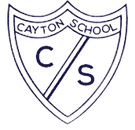

Learn from yesterday, seek today and aim for tomorrow

IMPORTANT: Please note that we are a nut-aware school. Nuts should not be brought into the building due to allergies.

Being a Geographer at Cayton
At Cayton, we want children to develop an inquisitive and investigate mind where they ask questions about their surroundings and the wider-world we live in. We believe that Geography:
-
Stimulates an interest in places, people and the environment.
-
Helps young people make sense of a complex and dynamically changing world and how society, the economy and environment combine to bring about change.
-
Explains where places are, how places and landscapes are formed, how people and their environment interact.
-
Explores how a diverse range of economies, societies and environments are interconnected.
-
Examines natural resources and their sustainable use.
The National Curriculum states that “a high-quality geography education should inspire in pupils a curiosity and fascination about the world and its people that will remain with them for the rest of their lives. Teaching should equip pupils with knowledge about diverse places, people, resources and natural and human environments, together with a deep understanding of the Earth’s key physical and human processes.”
Our curriculum reflects these beliefs and has been researched to ensure a deep and consistent pedagogy in the teaching of Geography. Through the use and teaching of GIS (Geographical Information Systems) the curriculum enables children to make links with the current world and climate we live in.
“Geography explains the past, illuminates the present and prepares us for the future. What could be more important than that?” Michael Palin
The Learning Journey
Early Year
In Early Years, children start by looking at their immediate surroundings and location through sensory learning. They partake in learning walks to absorb their surrounding through sight, smell, touch and sound. Observations are recorded through photos, QR codes, videos and recording of their verbal responses. They study their local area and are taught an appreciation of where they live.

Pupils make observations in the weather patterns in their locality and how these change over time and through the seasons. They compare these to well-known places that vary in extremities. In their fieldwork, children study the land and how it is used to produce the foods we eat and how food may come from other countries.
Key Stage One

Through Key Stage 1, children further this understanding of their locality by looking at the country in which they live and their position and location in the wider-world. They learn about the seas that surround them and which continent we are on. They then relate this to the other continents and their relative position. They make careful observations of these continents to describe their climates and features.
Children are then equipped to compare their locality with that of other countries and climates. Pupils observe and recognise human and physical landmarks within the UK.
In fieldwork, children start to use positional and directional language to describe places in their locality and start to use a compass with the four points - North, East, South and West. Through the mapping work that is taught, they start to use key symbols and start to read maps. Throughout the holistic approach of the curriculum, they learn key life-skills such as learning their address and postcode, map reading and studying weather patterns in climates. Children use GIS (Geographical Information Systems) to develop a good understanding of the use of technology in Geography including using the MetOffice Weather System software.
Lower Key Stage Two
Through Lower Key Stage 2, children extend on their location knowledge by focusing on the continent they live in and the associated countries in the continent. They start to locate countries and cities and compare similarities and differences of major cities from two continents. They learn key vocabulary to describe location and position such as hemispheres, equator and climate zones. They locate natural resources within the continent and look at migration patterns between countries and how populations have changed over time.

Pupils extend on their compass knowledge to study the eight points of the compass and start to create maps using keys and include symbols taught in Key Stage 1. Through fieldwork, pupils start to plan a journey using a range of roads and locate a range of grid references to locate places.They explore human and physical geography of regions and make comparisons of natural features such as volcanoes and rivers.
Pupils use GIS software including ArcGIS to study terrain and land usage around the globe including a range of biomes.
Upper Key Stage Two
During Upper Key Stage 2, children extend again on their location knowledge by focusing their location knowledge of the whole world and more in-depth study of the Americas. They further their understanding of Europe and learn associated capital cities including the comparisons to our locality. They develop their understanding of how places and locations have developed over time including real-life and current issues including deforestation and climate change.

Pupils study specific regions and biomes to compare climates and how they change over time. They study populations, economics and investigate and interpret data relating to these. To extend on the work in Lower Key Stage two, pupils build on their knowledge of maps and are taught 6-digit grid references and use a wider range of symbols and keys in mapping, including scaling. Pupils compare a vast range of issues when looking at landscapes including erosion and changing coast lines and use a full range of GIS to enhance their learning including ordnance surveying.













